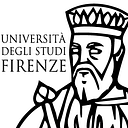The Transculturality of Virtue in the Early Modern Mediterranean: A Case Study in Florentine-Ottoman Relations
From Firenze University Press Journal: CROMOHS
Luc Wodzicki, Freie Universität Berlin
Italian-Ottoman relations during the era of Sultan Mehmed II (r. 1449–1451 and 1453–1481) have long attained an exemplary status in studies on the early modern Mediterranean. The particularly diverse cultural interests of the conqueror of Constantinople, his unique position as a ruler ‘between East and West,’ and his patronage of Italian artists excellently demonstrate the interconnected nature of the basin. In the last years, the decade-long mythologisation of Mehmed II has already given way to a systematisation of his political, cultural, and intellectual agendas, and the actors that helped shape it, thanks in large part to numerous insights from Ottoman studies. Regarding the intellectual dimension of the Ottoman court, new research has confirmed and refined previous theses on a heterogeneous culture that is highly capable of adaptation and connection. The Sultan engaged with the world outside his empire on his own terms but with a great capacity for understanding the legitimising regimes around him. As a consequence, studies of Renaissance Italy must re-evaluate their sources in this new light. This requires methodological decisions on approaching a critical reading of Italian sourceswhileseriouslyconsidering Italian engagement with the Ottoman Empire.As a case in point, I aim to connect this task with the theme of the thematic section, ‘Analytical Concepts for Transcultural Settings,’in two ways. Firstly, I intend to provide a specific example of how Renaissance humanism and the intellectual culture of the Ottoman court came together and mutually influenced each other through the actions of individuals. For this, I choose the previously understudied political communication between early Medici Florence and the court of Mehmed II. As I will show, conceptions of virtue ethics played a central role here by construingpolitical actions as ethical conduct. The feasibility of such interaction was significantly based on theindirectly shared heritageof virtue ethicsfrom classical antiquity, manifested through different genealogies for Italians and Ottomans. Secondly, I believe the concept of transculturality can be useful in describing and understanding early modern Mediterranean culture in general, and specifically between the Italian city-states and the Ottoman court. Although the term transculturality has been historically employed in various contexts, its theoretical and empirical foundations are still in need of concrete studies. Based on my analysis in this article, I propose understanding transculturality not as a permanent conditionbut as a process actively propelled by the actors involved, creating a state of cultural in-betweenness observable by historians.Incorporating global intellectual history as an analytical framework proves particularly practical here, as it enables us to comprehend the linguistic, political, philosophical, and rhetorical bases on which the actors themselves captured, articulated, and negotiated their Mediterranean encounters. By doing so, we can prevent transculturality from becoming an anachronistic approach, allowing us to imbue the concept with meaning directly derived from the actors’ own perspectives and understandings. This shift is crucialbecause,until recently, there was no intellectual dimension to the history of early Ottoman-Italian encounters. In many instances, the historiography focused either on Renaissance Italian perceptions of Ottoman culture and warfare, or highlighted the role of practices, material cultures, and aesthetic cultures in diplomacy, trade, and cultural exchanges. Intellectual entanglements were considered only when they illuminated these aspects. Moreover, a methodological Euro-centrism often dominated in interpretation.
DOI: https://doi.org/10.36253/cromohs-14743
Read full Text: https://oajournals.fupress.net/index.php/cromohs/article/view/14743
